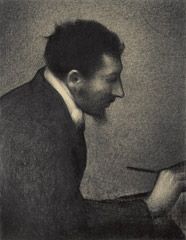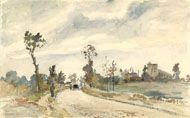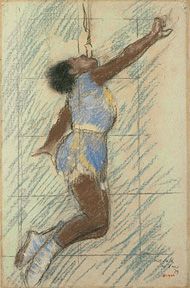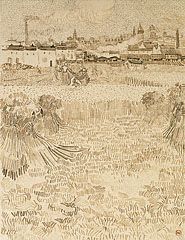The 19th century was a time when art seemed to develop and evolve at a much faster rate than ever, new artists, movements, genres, techniques and schoold appearing overnight. The artists began to have more opportunities to exhibit and sale their art, their names became more and more popular, the works were reproduced in great number and the overall cost of the materials used decreased. But one thing was the same : drawing was still considered to be the basic and most important part in the foundation of artistic training. Nothing changed from the Renaissance, and in the 1800s a good artist had to know how to draw, combining tradition and innovation.
The role that drawing played in the 19th century is presented in a vast exhibition, hosted until September 9 2007 at the J. Paul Getty Center in Los Angeles, USA, a chance for everyone to understand how draftsmanship evolved at that time, by examining first hand the compositions of the best artists of that period. All of the great names in modern art emphasised drawing, and the painters devoted hundreds of hours to perfect that skill
 | George Seurat, for example, tried to present the modern world in a way that was both classic and modern, and his drawings are interesting mainly because of that. Using the Conte crayon, Seurat played with various shades of black and grey, at the same time paying a tribute to the elegant lines that he admired in the art of the past. |
On the other hand, Camille Pissarro used drawing to create his masterfull watercolors, and most of his landscapes were at first drawn in black chalk. Then, after the lines of the compositions were drawn, the artist covered it all with watercolors, resulting the poetical and vivid compositions that would bring his fame. |  |
One of the greatest masters of drawing in the 19th century was without a doubt Henri de Toulouse-Lautrec, who in the spring of 1899, when he was in the hospital, trying to cure his alcoholism, produced a fascinating series of 50 drawings, with circus subjects. He used colored pencils, brought to him by his mother. Although then the colored pencils weren't as good as today, fairly new and the choice of colors was small, Toulouse-Lautrec managed to create extraordinary compositions, using the shades and tones in an original and inteligent manner.
 | Edgar Degas was in his turn fascinated by drawing and spent a great deal of time producing countless sketches for his more ambitious works. One of his best models was a certain Miss Lala, an acrobat who was rather famous at that time, for her performances in the circus arena. The artist would make several studies of Miss Lala, combining crayon and pastel. |
 | Vincent van Gogh was another master of 19th century drawing, and for the whole of his life he tried to be the best in the field, knowing that only then he would be a great masters. His drawings are surprising fresh and personal, with a style that intersects lines and dots in a new way. |
These are just a few of the great painters featured in the exhibition hosted at the J. Paul Getty Center, as the curators have tried to chose the best, in order to present the developpement of European drawing in the 19th century.
Photo : getty.edu
2007-07-12

































